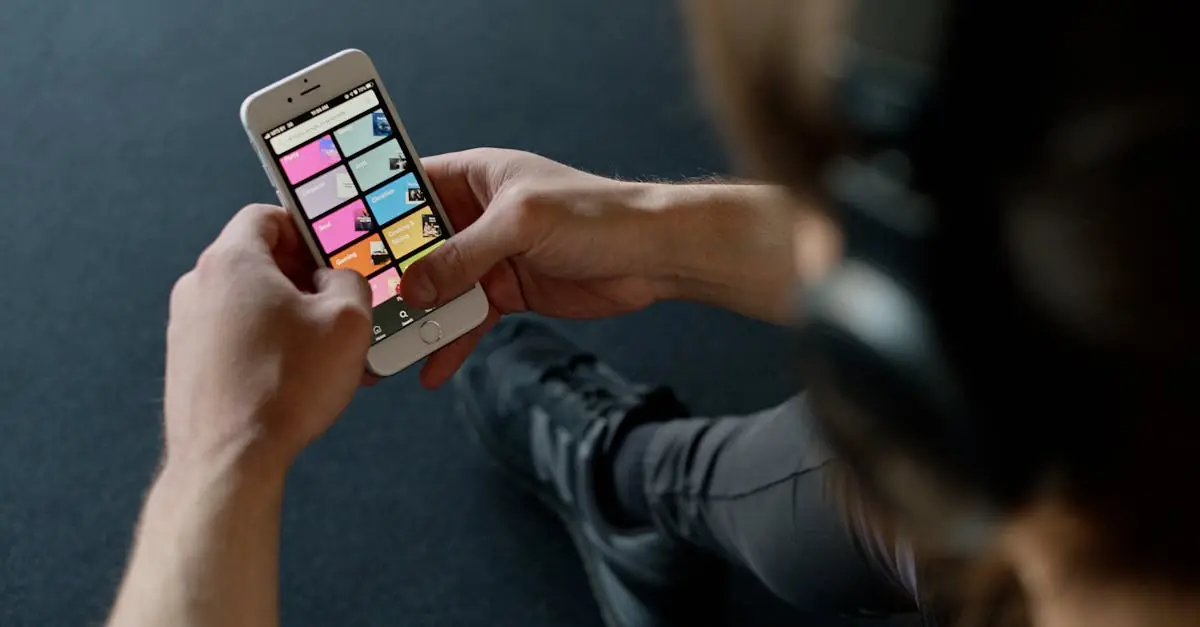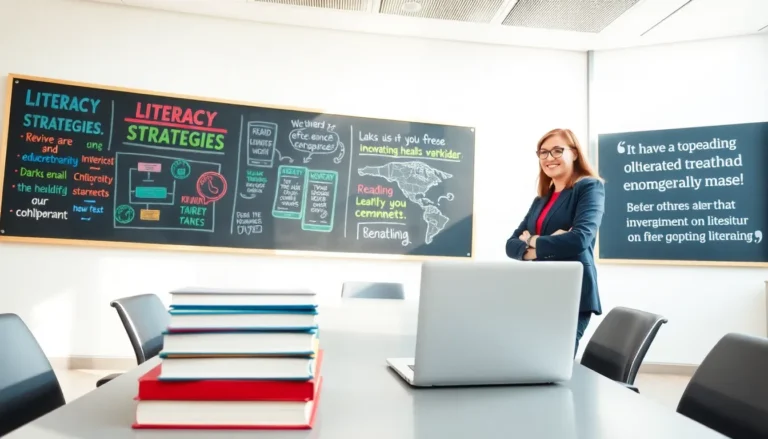In today’s tech-savvy world, privacy feels like a luxury few can afford. With smartphones glued to our hands, the thought of someone tracking your iPhone can send shivers down anyone’s spine. Imagine your phone as a secret agent, but instead of thrilling missions, it might be leaking your every move to a nosy friend or an overzealous ex. Yikes!
Table of Contents
ToggleSigns That Indicate Tracking
Identifying potential tracking on an iPhone involves observing specific signs. Several indicators may reveal if someone is keeping tabs on the device.
Unusual Battery Drain
Unusual battery drain often signals tracking activity. If the battery depletes faster than usual, it could point to unauthorized apps running in the background. It’s important to monitor battery usage in the settings. A significant increase in background app activity can indicate potential tracking. Keeping track of battery health may help detect suspicious usage patterns.
Unexpected Data Usage
Unexpected data usage serves as another red flag. Regularly checking mobile data usage reveals patterns that might seem off. If significant spikes appear without any recent changes in app usage, tracking could be a possibility. Some tracking software consumes more data, particularly when transmitting location information. Review data usage by app monthly to ensure no unauthorized activity occurs.
Presence of Unknown Apps
Presence of unknown apps raises concern about tracking. Checking the app list can expose unfamiliar applications that may not have been installed. Some tracking tools disguise themselves as legitimate apps. Deleting or reporting these unknown apps helps maintain privacy. Conducting periodic reviews of installed applications ensures that no unwanted software remains on the device.
Checking Location Settings
Monitoring location settings is essential to safeguard privacy. Users can easily check and adjust these settings on their iPhones.
Reviewing Location Services
Location Services must undergo regular checks. Users access this feature through Settings, then Privacy, and finally Location Services. An overview of apps that use location data appears here. Disabling access for unfamiliar or unused applications enhances device security. Consider whether specific apps genuinely require location access. If an app does not need it, turning off location tracking protects personal data. Notifications indicating when an app is actively using location can also inform users about their device’s activity.
Managing Sharing Preferences
Sharing preferences offer another layer of control. Navigate to Settings, then Privacy, and tap on Location Services. Here, users can set preferences for each app. Options include “Never,” “While Using,” and “Always.” Choosing “Never” for apps that do not require location data enhances privacy. Additionally, adjusting the “Share My Location” setting allows users to control who sees their location. Muting this feature means only trusted contacts gain access to real-time location updates. Regularly revisiting these preferences ensures privacy remains intact.
Monitoring for Spyware
Monitoring for spyware involves identifying any applications that may compromise privacy. Keeping an eye on installed apps plays a crucial role in this process.
Identifying Suspicious Apps
Check the list of installed apps regularly to spot anything unfamiliar. Users should look for apps they do not remember downloading. Popular spyware apps may disguise themselves as legitimate tools, so vigilance is essential. Noticing unusual permissions or requests for access can indicate suspicious behavior. Removing any app that seems out of place or unnecessary may enhance security. Users can also search online for reviews of unknown apps to uncover potential risks.
Running Security Software
Utilizing security software adds an extra layer of protection to an iPhone. Effective security solutions can detect and remove spyware. Regular scans can help identify vulnerabilities that may expose personal data. Popular antivirus applications specifically designed for iOS can provide real-time protection and alerts. Keeping the software updated ensures users have the latest security features. Users may also consider enabling features like automatic scans to maintain ongoing protection. Being proactive in this way significantly reduces the chances of falling victim to spyware.
Privacy Settings to Review
Reviewing privacy settings plays a critical role in safeguarding personal data on an iPhone. Users should focus on specific areas to enhance security and ensure their information remains private.
Updating Privacy Restrictions
Updating privacy restrictions empowers users to manage app permissions effectively. Begin by navigating to Settings, then selecting Privacy. From there, explore categories like Location Services and Contacts. Limiting access for apps that don’t require certain data prevents unnecessary information sharing. Regular audits of these permissions ensure that only needed apps maintain access, minimizing exposure to potential tracking.
Enabling Two-Factor Authentication
Enabling two-factor authentication adds a substantial layer of security to an iPhone. Access the Apple ID settings and toggle the feature on. This measure requires users to verify their identity with a second method, such as a text or verification app, when logging into their accounts. Enhanced security measures deter unauthorized access, making it more challenging for trackers to infiltrate personal information. Reassessing this setting periodically reinforces data protection, particularly when any suspicious activity is suspected.
Staying vigilant about privacy on an iPhone is essential in today’s digital landscape. By recognizing the signs of potential tracking and proactively managing settings, users can significantly enhance their security. Regularly reviewing app permissions and location settings empowers individuals to take control of their personal data.
It’s crucial to remain informed about the latest threats and to utilize security software for added protection. By adopting these practices, users can safeguard their privacy and enjoy their devices without the fear of being monitored. Taking these steps not only protects personal information but also promotes a sense of security in an increasingly connected world.



